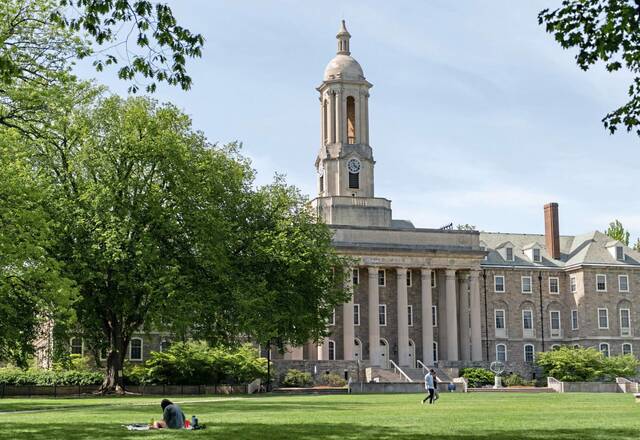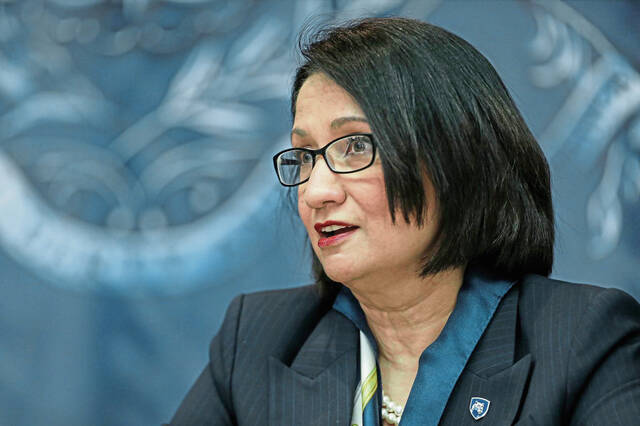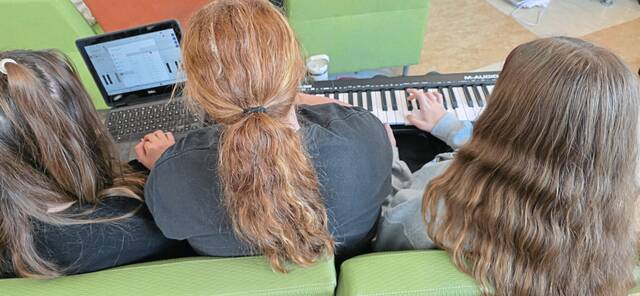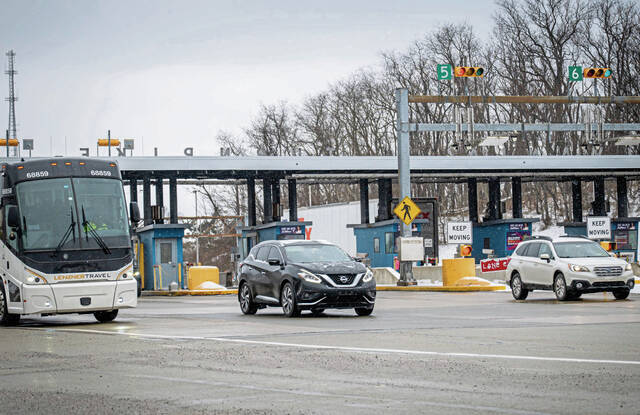Penn State University intends to regionalize or share additional operations across its branch campuses this fall, including services such as advising and student affairs.
Penn State President Neeli Bendapudi and top aides outlined the move Thursday during an update on efforts to ease financial pressures — some caused by sharp branch campus enrollment losses — and create a more sustainable long-term, universitywide budget model.
Leaders did not say Thursday if the latest moves will require staff reductions beyond buyouts that already have cut the workforce by 381 people, or 10%, across the 19 branch campuses, also known as Penn State’s Commonwealth campuses.
In Western Pennsylvania, they include Penn State New Kensington in Upper Burrell, Penn State Greater Allegheny on the border of McKeesport and White Oak, Penn State Beaver and Penn State Fayette, the Eberly campus, as well as Penn State Shenango.
“We continue to address organizational and operational structures, and no decisions about future staffing reductions have been made,” spokeswoman Lisa Powers said after the session.
The briefing, conducted virtually, touched on topics from further growing university research to an academic program and portfolio review — a closely watched process to decide if the right mix of offerings is deployed where student demand is greatest.
But academic realignment isn’t the only preoccupation.
Consolidating branch services, along with placing multiple branch campuses under a single chancellor, also have produced angst among some faculty, staff and students.
In a decade, enrollment is down 24% in aggregate, with some branches experiencing declines of almost 50%.
Regionalizing services and creating teams of cross-trained professionals make for more consistent student services and ensure no campus operates in isolation, said Margo DelliCarpini, vice president for Commonwealth Campuses and executive chancellor.
“For example, if a staff member is on vacation or we have a vacancy, there are many campuses that were just going without those services that were performed by that one staff member,” she said. “So with a regional approach, we can address that.”
The number of academic advisers needed on a campus depends on the campus’ enrollment, DelliCarpini has said. At present, there are inequities among the campuses that will be resolved by restructuring into regional teams.
Throughout the process, some professors and others have questioned the university’s approach.
“Faculty have a lot to contribute to the conversation (but) haven’t been consulted in a way that would result in the best outcome,” said Josh Wede, a teaching professor of psychology at University Park and chair of Penn State’s Faculty Senate.
He said sharing or centralizing of services, like the academic review, can make sense — but only if careful thought is given to long-term outcomes.
The initial phase of branch campus regionalization already is underway. It includes staff in continuing education, enrollment management and the registrar’s office.
Early this fall, the second phase will touch on advising and instructional design. Later this fall, phase three services provided by strategic communications and student affairs will be restructured into shared services teams, officials said.
During the virtual session, Bendapudi cited signs of vitality, including 18,500 new undergraduate students systemwide this fall, an increase of 163, or 1.3%, in graduate enrollment. She also cited “extremely high applications,” without offering a number.
“I’m so pleased with the great strides we’ve made over the last year to balance our budget so that we can have the resources to invest in ourselves for the future,” she said. “While we’re in a much, much better financial position, there’s still a lot of work to do.”
Penn State, with 88,000 students, initially faced a projected $140 million education and general budget in 2022-23. But through various cost-cutting and efficiency moves, university officials now anticipate a balanced budget in 2025-26.
Branch campuses absorbed more than half of some $94 million in cuts this year.
Main campus student demand is high, and there are plans to build new classroom space to help accommodate an anticipated growth of 800 incoming students over the next several years. But in keeping with national enrollment patterns, demand has been softer for regional campuses.













